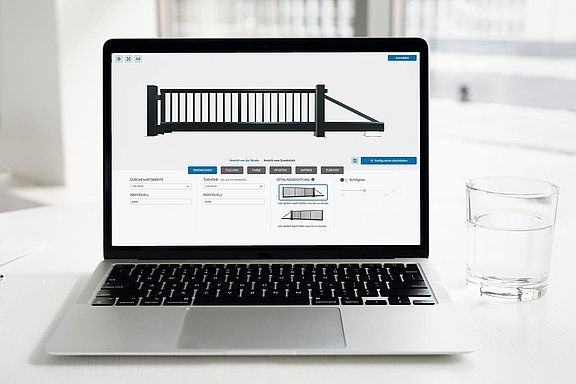The IKEA effect with configurators
Author: Elisabeth Sonnleitner
You must have already assembled an IKEA shelf? The personal effort of assembling gives the piece of furniture a unique charm and also fills you with a little pride. Isn't it? This phenomenon is known as the "IKEA effect" and has far-reaching effects on our perception of products and services. In this blog article, we will take a closer look at the IKEA effect, especially in the context of configurators.
Definition IKEA effect
The IKEA effect is a psychological phenomenon that was first investigated in a study by scientists Michael Norton, Daniel Mochon and Dan Ariely in 2012. This phenomenon describes the influence that personally configuring and assembling products has on our appreciation of them. It was found that people tend to value products they have created themselves more and see them as more valuable than comparable products made by others.
Significance of the IKEA effect in psychology
But what is the concrete meaning of the IKEA effect in psychology and, consequently, in everyday life?
- Self-efficacy and self-design: When people assemble their own furniture or other objects, this increases their self-esteem because they can master the task independently. This boosts their self-confidence and consolidates their belief that they are capable of successfully overcoming challenges.
- Investment of time and effort: Devoting time and effort to assembling a product, whether it's a piece of IKEA furniture or another task, creates an emotional connection to the end result. By investing a lot of time and energy into an activity, people often develop a deeper commitment and interest in its success. This commitment leads them to view the finished product not only as a physical object, but also as a symbol of their own efforts and dedication. This emotional connection can lead them to perceive the product as more valuable and meaningful.
- Identification with the product: Through active participation in the process of product design and creation, people often develop a sense of identification with the end product. They no longer regard it merely as an anonymous mass product, but as something personal and unique that they have helped to create. In psychology, this manifests itself as an increased feeling of satisfaction and attachment to the self-created product, be it a piece of furniture, a work of art or a project in a professional context.
Importance of the IKEA effect in everyday life
Imagine your daily routine. Have you ever consciously experienced the IKEA effect even though you didn't assemble an IKEA shelf? No? Most definitely. You don't have to assemble an IKEA piece of furniture every day to come into contact with the IKEA effect. In the work environment, for example, the IKEA effect can occur when ideas and projects are designed in-house. This phenomenon is also evident in DIY projects, whether it's planting a garden or renovating a room. The IKEA effect reinforces the feeling of success and satisfaction in such DIY projects (DIY = do it yourself). In interpersonal relationships, this effect also plays a role. Couples who master challenges together and celebrate joint successes often strengthen their bond and value their partnership more intensely. The IKEA effect illustrates the importance of recognizing one's own achievements and efforts and shows how this can influence daily life in many ways.

Practical examples
The IKEA effect refers to the tendency of people to develop more appreciation and attachment to a product when they are actively involved in its design or construction. Here are three practical examples of the IKEA effect:
- IKEA furniture assembly: A clear example of this is the assembly of furniture from IKEA. As a rule, customers purchase furniture in individual parts and then assemble it themselves at home. In the process, they invest time and effort to make the furniture functional. This assembly process creates a strong emotional attachment to the furniture, and customers feel pride for their work - a phenomenon known as the IKEA effect.
- Homemade gifts: People who make homemade gifts often experience the so-called IKEA effect. By investing time and creativity into a gift, they appreciate it more and feel a closer connection with the recipient. This can include gifts like handmade candles, knitted scarves or self-painted artwork.
- Homemade dishes in restaurants: Some restaurants allow their customers to create their own dishes by selecting and combining ingredients. This makes diners feel like they are actively involved in the culinary experience and create a personal connection with their food. They often appreciate the food more and have a positive experience that mirrors the IKEA effect.
The IKEA effect with configurators
In recent years, the way we can purchase, individualize and personalize products has changed dramatically. Configurators have become an important tool in this process. They enable customers to customize and design products according to their own preferences. This can range from the personalization of shoes and clothing to the individual configuration of furniture and cars. However, the use of product configurators is becoming increasingly important not only in B2C, but also in B2B, especially in mechanical engineering and similar industries. Configurators enable B2B companies to create customized solutions for complex products, which not only increases efficiency but also boosts customer loyalty.
The IKEA effect plays an important role when it comes to configurators. When customers have the opportunity to design products according to their own ideas, there is a sense of ownership and pride in the final product. This can lead to customers developing a deeper emotional connection to the product and brand they have configured. They no longer see it as a simple product, but as something that reflects part of their personality and creativity.
Companies should use this insight to create a deeper bond between customers:inside and brand with the help of configurators. Because at the end of the day, it's not just about selling products, but also about creating emotions and memories.

The dark side of the IKEA effect from the perspective of psychology
The dark side of the IKEA effect refers to potential downsides that can occur when people become too attached to their self-designed or homemade products or projects:
- Cost and time investment: The IKEA effect can cause people to invest more time and money in designing or making products than they had originally planned.
- Unrealistic expectations: Occasionally, because of personal commitment and investment, expectations for the final product are so high that the actual reality cannot keep up.
- Difficulty letting go: The IKEA effect can cause people to have difficulty parting with things even when they are no longer needed or taking up space.
- Limited flexibility: People may be restricted in designing products according to their own ideas if they do not meet current needs or trends.
It is crucial to understand that the IKEA effect can foster positive emotional attachments, but it can also have negative consequences if overemphasized or not balanced with other aspects of life. Therefore, it is important to weigh the costs and benefits and find a healthy balance.
Conclusion: IKEA effect and configurators
The IKEA effect has significant implications for companies that use configurators. Here are some reasons why this effect is important:
- Increasing customer loyalty: Customers who have designed their own products are more likely to shop with the same brand again. They develop an emotional connection to the items they have created and wish to repeat this unique experience.
- Word-of-Mouth Marketing: Satisfied customers who are happy with their custom configurations tend to be happy to tell others about their positive experiences. These referrals can lead to increased awareness and result in a larger customer base.
- Willingness to pay more: Customers appreciate the value of customization and are therefore more willing to accept a higher price. This happens because they understand that they are paying for a unique and customized product.
- Differentiation from competitors: companies that offer customized products can differentiate themselves from their competitors by using the IKEA effect. The effect makes it possible to create a unique bond between customers and the brand.
Have we made you curious? You are welcome to contact us for a non-binding discussion about 3D configurators.